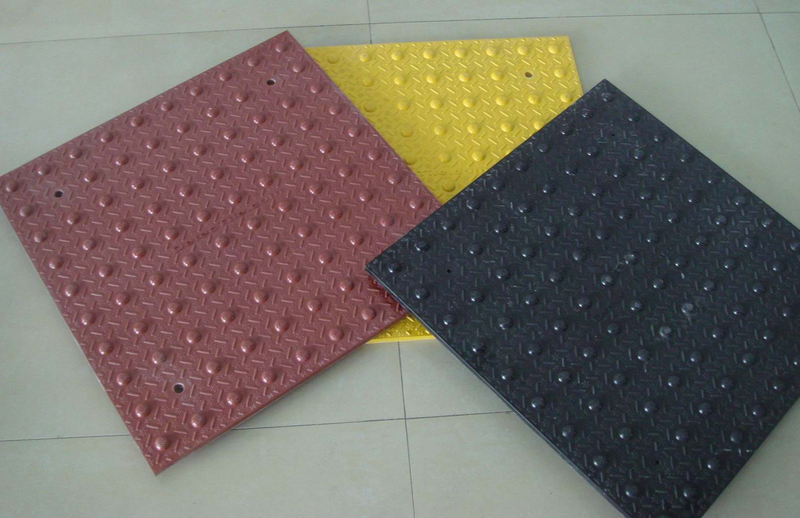Views: 0 Author: Site Editor Publish Time: 2025-10-30 Origin: Site









When it comes to cutting fiberglass reinforced panels (FRP), the right tools and techniques are essential for achieving clean, precise results while ensuring safety. FRP panels are widely used in various applications due to their durability and strength, but cutting them can be challenging without proper preparation. In this guide, we will explore the essential tools, safety measures, and effective cutting methods to help you master the art of cutting FRP panels efficiently and safely. Whether you're a DIY enthusiast or a professional, these tips will ensure your project is successful and your workspace remains secure.
When cutting fiberglass reinforced panels (FRP), having the right tools and materials is crucial. These help you achieve clean, precise cuts while keeping you safe throughout the process.
Always wear safety goggles to protect your eyes from flying debris and sharp fibers. Gloves shield your hands from cuts and abrasions caused by sharp edges or tools. Dust masks or respirators are essential to avoid inhaling harmful dust and tiny glass fibers released during cutting. An N95 respirator is a good choice for filtering out fine particles.
● Circular Saw: Ideal for straight cuts. Use a carbide-tipped or diamond-tipped blade designed for composite materials. This reduces chipping and produces smooth edges.
● Jigsaw: Best for curved or detailed cuts. Attach a fine-toothed blade for cleaner results. Drill a starter hole when cutting interior shapes.
● Routers: Perfect for edge finishing and shaping. Use carbide or diamond-tipped bits for durability and precision.
● Shears: Handheld shears come in manual, electric, or pneumatic versions. They offer quick, versatile cuts, especially useful for small adjustments or thin panels.
Accurate measuring is key. Use a tape measure and a marker to clearly outline the cutting lines. A straight edge or ruler helps draw precise, straight lines. Marking tape can also reduce fiber release along cut lines.
Cutting FRP generates dust containing fine glass fibers, which can irritate your respiratory system. Use a dust extraction system or a shop vacuum attached to your saw to capture dust at the source. Work in a well-ventilated area or outdoors to minimize airborne particles. Keeping your workspace clean reduces fire risks, as FRP dust can be flammable.
Always pair your cutting tools with an effective dust extraction system to improve air quality and extend blade life during FRP panel cutting.

Creating the right workspace is key to cutting fiberglass reinforced panels (FRP) safely and accurately. A well-prepared area helps control dust, secures the panels, and ensures your measurements are spot on.
FRP cutting releases fine dust and tiny glass fibers that irritate your lungs. Work outside if possible. If indoors, open windows and use fans to improve airflow. A well-ventilated space keeps dust from building up and lowers health risks. Avoid enclosed rooms without ventilation, as dust can linger and cause breathing problems.
Movement during cutting leads to uneven edges and possible damage. Use sturdy clamps to hold panels firmly on your workbench or sawhorses. Position clamps near the cutting line but not in the way of your saw blade. This keeps the panel steady, reducing vibrations and chipping. If clamps aren’t available, heavy objects or sandbags can help, but clamps provide the best stability.
Accurate cuts start with precise measurements. Use a tape measure and a fine-tip marker to draw clear cutting lines. For straight cuts, a straight edge or ruler ensures lines are perfectly aligned. For curves or shapes, use templates or flexible rulers. Applying masking tape along the cut line can reduce fiber release and prevent chipping by holding fibers in place during cutting.
Mark twice, cut once. Double-check measurements before you start cutting. Clear, visible lines guide your tools and help you maintain control throughout the process.
Always clamp FRP panels securely and mark cutting lines with masking tape to minimize fiber release and achieve cleaner cuts.
Cutting fiberglass reinforced panels (FRP) requires specific techniques to achieve clean, precise results without damaging the material. Below, we cover the best methods using common tools, helping you choose the right approach for your project.
A circular saw is the go-to tool for straight cuts on FRP panels. Equip it with a carbide-tipped or diamond-tipped blade designed for composites. These blades reduce chipping and provide smooth edges.
● Set the blade depth just slightly deeper than the panel thickness.
● Secure the panel firmly on your work surface.
● Use a straight edge as a guide to keep the cut perfectly straight.
● Move the saw steadily, avoiding forcing it through the panel.
This approach minimizes fiber release and ensures a clean cut line, saving time on post-cut finishing.
For curves, interior cutouts, or intricate shapes, a jigsaw works best.
● Use a fine-toothed blade made for synthetic or metal materials.
● Drill a starter hole for interior cuts large enough to fit the blade.
● Insert the blade into the hole and follow your marked line carefully.
● Keep a steady speed to avoid jagged edges or uneven cuts.
The jigsaw’s maneuverability makes it ideal for detailed work where a circular saw can’t reach.
When your project demands high accuracy or complex patterns, CNC cutting is a smart choice.
● Program your design into the CNC machine.
● Use diamond-coated cutting tools that handle FRP’s abrasiveness.
● Secure the panel on the CNC bed firmly.
● Let the machine follow the programmed path for precise, clean cuts.
CNC cutting reduces manual effort and offers consistent results, perfect for repeatable production runs or detailed architectural panels.
Routers help shape and finish FRP panel edges, adding bevels, rounded profiles, or custom contours.
● Choose carbide or diamond-tipped router bits for durability.
● Clamp the panel securely to prevent movement.
● Make multiple shallow passes to avoid chipping and maintain control.
● Adjust the depth gradually to achieve the desired edge profile.
Using a router after cutting smooths rough edges and enhances the panel’s appearance and safety.
Always match your cutting tool to the task—circular saws for straight lines, jigsaws for curves, CNC for precision, and routers for finishing—to get the cleanest, safest cuts on FRP panels.
Cutting fiberglass reinforced panels (FRP) safely protects you and ensures the best results. Follow these tips to avoid injury and keep your workspace secure.
Always wear safety goggles to shield your eyes from flying debris and sharp fibers. Gloves protect your hands from cuts and abrasions caused by sharp panel edges or tools. A dust mask or respirator, like an N95, prevents inhaling harmful dust and tiny glass fibers released during cutting. Additionally, consider ear protection when using loud power tools to safeguard your hearing.
FRP cutting creates fine dust containing glass fibers that irritate lungs and skin. Use a dust extraction system or shop vacuum attached to your cutting tool to capture dust at the source. Work outdoors or in a well-ventilated area to reduce airborne particles. Applying masking tape along the cutting line can hold fibers in place and minimize release. Clean your workspace frequently to avoid dust buildup, which poses health and fire hazards.
Sharp blades cut more efficiently, reduce chipping, and lower fiber release. Inspect blades before each use and replace dull ones promptly. Check the panel for hidden objects like nails, screws, or metal fasteners before cutting. These obstructions can damage blades, cause kickback, or produce unsafe flying debris.
Keep your workspace tidy and free of clutter to prevent accidents. Remove combustible materials since FRP dust can be flammable. Secure panels firmly using clamps to avoid movement during cutting. Ensure your tools are in good condition and cords are safely routed to prevent tripping hazards. Good lighting helps you see cutting lines clearly and work precisely.
Always wear full protective gear and use dust extraction to minimize exposure to harmful FRP dust and fibers during cutting.

After cutting fiberglass reinforced panels (FRP), proper cleanup and edge finishing are essential to ensure a professional look and maintain panel durability. Handling rough edges and dust carefully also protects your health and workspace.
Cutting FRP panels often leaves edges that are sharp or slightly rough. To smooth these, use fine-grit sandpaper or a sanding block. Sand gently along the edges to remove any splinters or raised fibers. This step prevents injuries from sharp edges and prepares the panel for sealing or installation.
For larger or more irregular edges, a router with a carbide or diamond-tipped bit can shape and smooth the surface efficiently. Multiple shallow passes with the router help avoid chipping and maintain control over the finish.
Cutting FRP generates dust containing tiny glass fibers, which can irritate skin, eyes, and lungs. Immediately clean dust and debris from your workspace using a shop vacuum equipped with a HEPA filter or a dust extraction system. Avoid sweeping or using compressed air, as these methods can spread fine particles into the air.
Dispose of collected dust and debris following local regulations. Some areas consider FRP dust hazardous waste due to its fibrous nature. Proper disposal reduces environmental impact and keeps your workspace safe.
Sealing the edges of cut FRP panels is crucial. It prevents moisture from entering, which can cause delamination or weaken the panel over time. Sealing also protects against chemical exposure and UV damage, extending the panel’s lifespan.
Use an FRP edge sealer or a compatible epoxy resin to coat the cut edges. Apply evenly and allow it to cure as per the product instructions. This creates a smooth, protective barrier that enhances both durability and appearance.
Always smooth rough edges and seal cut surfaces promptly to protect your FRP panels from damage and ensure a safe, polished finish.
Cutting fiberglass reinforced panels requires specific tools and techniques for clean, precise results. Safety measures, such as wearing protective gear and managing dust, are crucial. Practicing and refining your skills will improve proficiency and ensure safe handling of FRP panels. For more resources and products, consider exploring offerings from About Jianan - Your Trusted Fiberglass Manufacturer. Their products provide exceptional durability and value, enhancing your projects with reliable and high-quality materials.
A: FRP panels, or fiberglass reinforced panels, are composite materials made from fiberglass and resin, known for their strength and durability.
A: To cut FRP panels safely, wear protective gear, use appropriate cutting tools like a circular saw or jigsaw, and ensure proper ventilation to manage dust.
A: A dust extraction system captures harmful dust and glass fibers released during cutting, improving air quality and reducing health risks.
+86 13913647707 / 13915651436


